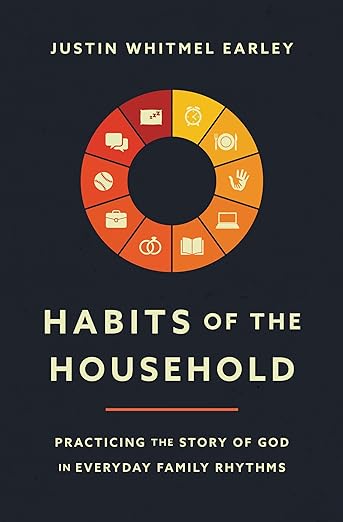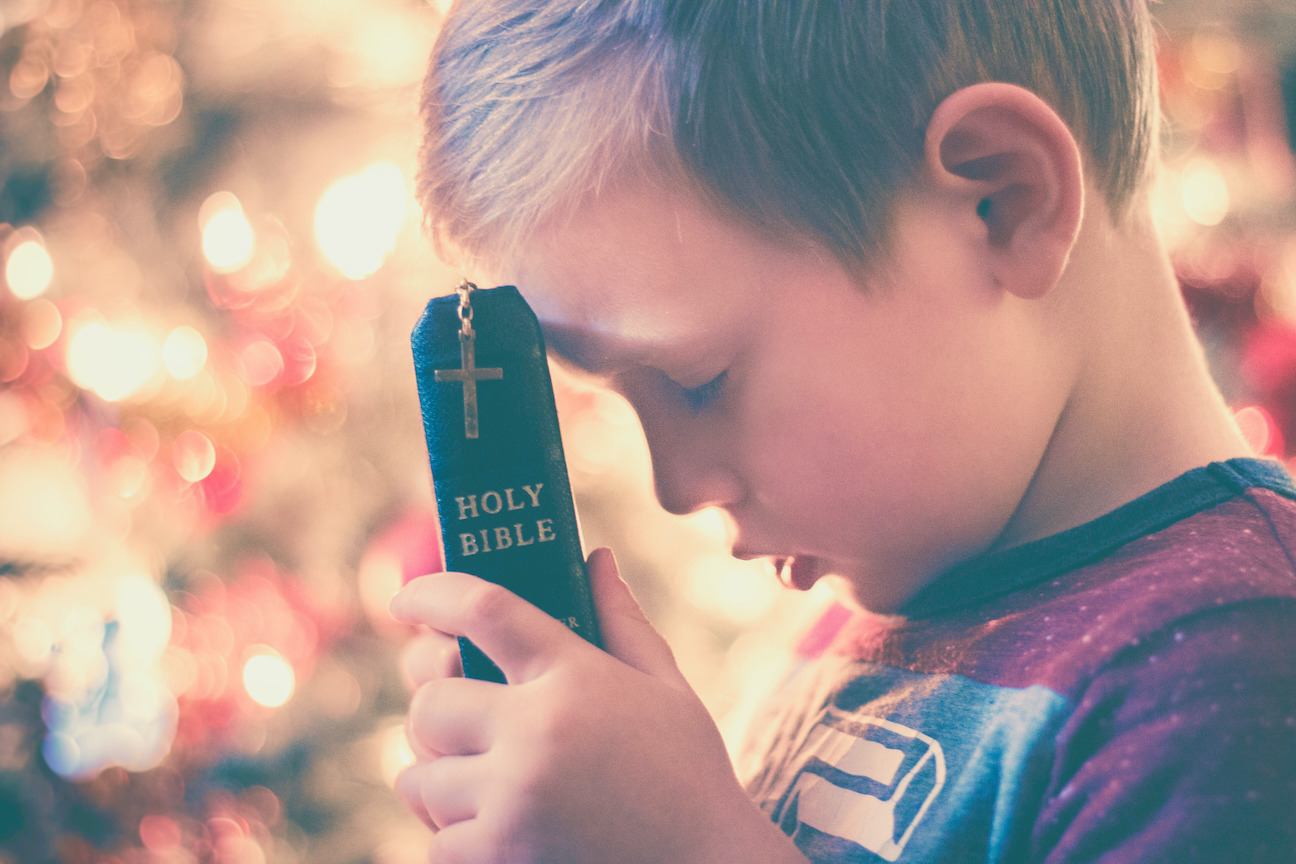Around the time our kids were born, my husband and I both read Family Worship by Donald Whitney. I’ve written before about how this book impacted our perspective on how we disciple our children. Specifically, we became convicted that we should start a family worship time daily.
For the last four years, the elements of our family worship have remained roughly the same, but as our kids have gotten bigger, we’ve adjusted our time to account for their increasing ability to pay attention, retain information, and participate.
Our kids are currently 5 and 4 years old, and this is how our family worship time looks in this season.
Timing
We have always conducted our worship time in the evenings. Generally, this happens right before bed. We have found that once we have wrapped up everything for the day–homework, play, dinner, getting ready for bed–we are able to calm down, focus, and more easily set our minds to the time ahead.
While this time has not historically lasted very long, we have been able to extend it as our kids have gotten older and their attention spans have increased. Now, we spend a total of twenty or thirty minutes focusing on God together.
Elements
As I mentioned above, the elements of our family worship time have remained largely the same, though we have changed or added some in the last year or two. Currently, we incorporate four elements in our family worship time.
-
Reading Bible stories. Up until the last couple of months, we had always read The Jesus Storybook Bible each evening. We read through this book probably thirty times over the four years we used it, starting it over the day after we finished the last story. This repetition was intentional, as we wanted our kids to become familiar with the stories.
While we loved many things about The Jesus Storybook Bible, we recently retired it in favor of a different Bible storybook that we felt was better suited toward our kids in their current age and stage. We recently began reading through The Biggest Story Bible Storybook. So far, we are really enjoying it and I plan to do a side-by-side comparison of both storybooks when we finish the current one.
While reading these books is not the same as reading the actual Bible, we have seen the benefits of familiarizing our children with many of the stories and characters found in Scripture. Eventually, and probably sooner than later, we will begin reading the actual Bible with them.
-
Memory Verses. This is one of the newer elements, and one we have not been as consistent with until this year. Honestly, I’m not sure we would have incorporated this in our worship time if it were not for some encouragement from our local church. For the last three years, our daughter has participated in the Truth Trackers program on Wednesday nights at our church (our church recently changed the minimum age for participation, so our son will officially start in the Fall).
Each week, we review the Bible verses she has learned so far in Truth Trackers, and we teach them to our son, as well. We add on one verse each week, so currently they’re practicing about 20 memory verses each evening.
One thing that makes this simpler for them is that Truth Trackers condenses each verse into an average of 5 to 7 words so that it’s easier for the kids to remember. For example, one of their verses is John 1:1, which Truth Trackers condensed into “In the beginning was the Word…”
While the first two elements generally take place in our living room, once we move into bedtime, we incorportate two more elements once the kids are actually in bed.
-
Singing. From birth, we have always sung the doxology to our kids before they go to sleep. I don’t know why this is the song I picked when I randomly added singing to our daughter’s bedtime routine as an infant, but it’s stuck. Now, my husband and I sing it to both kids together and we encourage them to sing along (though our success in getting them to sing has, so far, been very low).
We would both like to make singing together a more formal part of our family worship time, but of all the elements, this one can feel the most awkward and our kids are not always keen on being active participants in this part.
-
Prayer. The last thing we do before leaving our kids’ room is praying together. Typically, we alternate nights. One parent and one child prays and then we switch who prays the next night. This allows my husband and I to both model prayer to our children and give them an opportunity to practice praying.
While our kids usually lean into singing the “Thank You, Father” prayer, we try to encourage them to pray to God the way that we do, so they can learn how to pray for others and give thanks to God for all of the blessings He has given them.
Words of Encouragement
When your kids are tiny, it can be easy to dismiss or feel overwhelmed by the idea of incorporating a family worship time in your daily routine. Here are some things we’ve learned over the last few years that may encourage you as you start.
- Family worship time will not always look the same from day to day. Evening activities, travel, extra curriculars, illness, etc will affect how it goes. The key is prioritizing it and maintaining consistency. One thing we do to keep ourselves consistent is using a habit tracking app to mark each day we read our Bible story. It may sound legalistic, but it really has helped us maintain consistency, particularly in busier seasons.
- Related, our family worship time is sometimes fractured. If we have a small group coming over, or Wednesday night church, or if one parent has an evening activity, then we may read our Bible story in the afternoon before the activities, while maintaining our bedtime routine of singing and prayer.
- Family worship can feel hard, sometimes. Particularly when our kids were still basically babies, I often felt like reading the Bible story with them was the worst part of the day. They were either squirming, or interrupting, or crying , or all three and the time would drag on while we waiting for their attention again. But that’s not a reason not to do it, and it does get better. Now, not only do our kids pay attention through the story, but they’re able to recap the story from the night before and trace storylines across multiple stories.
As you can see, we have made small adjustments to our family worship over time, as needed. What has remained the same is our commitment to maintaining these spiritual disciplines with our kids, no matter the time or location in which we find ourselves. As Whitney writes, “The worthiness of God to receive your family’s worship each day is reason enough to start practicing family worship today.”
Further Reading
Photo by Ann Danilina on Unsplash








